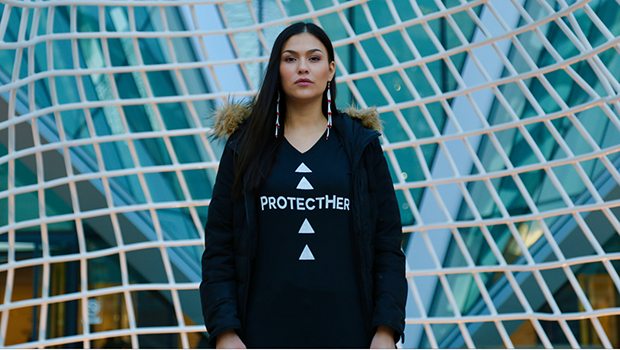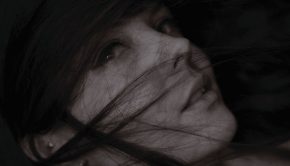The True Story of Pocahontas: Romantic Fantasy or Sexually Exploited?
Pocahontas: A Story of Modern Propaganda in Native America
Capturing our imagination is the tale of Pocahontas, and the romanticism that portrays Native women in today’s popular culture as either a princess or a squaw. Pocahontas represents the lover, protector, and rescuer of the white man. The stereotypical Indian princess is seen as young, beautiful, mysterious, or subservient. She is hesitant between her worlds and prefers western society. The media perpetuates this tale by casting her in the light of a savior of the white man who represents peace and power in the New World. However, this portrayal of Native women is far from realistic. The truth about Pocahontas is that she was a victim of kidnapping, was sexually exploited, and her story is being reenacted today.
According to the official tribal webpage of the Powhatan Renape Nation, Pocahontas was the daughter of a Native leader named Powhatan. They believe that the true story of Pocahontas was far from a romantic fantasy, stating that she was abducted, held hostage, and sent to England, never to return home. Melvyn Bragg on BBC Radio 4 and his guest Susan Castillo from King’s College London, described how Pocahontas was captured and lured onto a ship while visiting her husband’s people.
Pocahontas was tricked into going on board and was held captive as part of a plan to blackmail Powhatan. “She was taken to Jamestown where she was a prisoner,” Castillo said. She was removed from her family and forced into a marriage with a much older man. Her story was used to promote a political agenda, as a means to Christianize Native children and to justify colonization, providing a powerful propaganda tool.
Men today continue to exploit Native women who are being trafficked into prostitution, pornography, and strip shows over state lines to the Bakken oil fields in North Dakota and internationally into Mexico and Canada. Allegation of murder and disappearances of Native women sold as sex slaves, and the failure to effectively address and protect Native women has been on an ongoing concern in the Native community and has caught the attention of the United Nations. In fact, a report published on March 6, 2015, by the Committee on the Elimination of Discrimination against Women (CEDAW) accused the Canadian police and justice system of human rights violations for failing to protect Native women.
According to the United Nations report, Native women are more likely to be victims of violence than men and non-native women. In fact, data from Amnesty International reveals that Native women are more than 2.5 times more likely to be raped or sexually assaulted than non-native women. The United Nations report goes on to say, “Yet, despite the seriousness of the situation, the Canadian State has not sufficiently implemented measures to ensure that cases of missing and murdered aboriginal women are effectively investigated and prosecuted.” These fatal encounters are the root of the CEDAW investigations, concluding that Canada has failed to effectively address the murder and disappearance of Native women. As a result, systematic human rights violations are presented.
Christine Stark wrote in the StarTribune (Minn.), that Native women are easy targets for traffickers and that the Duluth harbor is a notorious site for the trafficking of Native women from northern reservations. Stark stated that “in an ongoing project focused on the trafficking of Native women on ships in Duluth, it was found that the activity includes international transport of Native women and teens, including First Nation women and girls brought down from Thunder Bay, Ontario, to be sold on the ships and in Duluth and Superior.” The Bakken oil fields in North Dakota is another major prostitution hub. The list of those trafficked included Native women, teen girls and boys, and even babies who have been sold for sex on the ships.
Native women are seen as easy targets for traffickers because there are few systems in place to protect them. “Native women are the only group who are predominately assaulted by men outside their race,” Stark said. She points out in her article the myths about prostitution in the media. “Being in prostitution is not pretty, as much of the media suggests. In contrast to the myth that prostitution is a freely chosen profession.” Much like Pocahontas before them, Native women are seen as exploitable currency in the eyes of their exploiters.
Native women are vulnerable to traffickers because of centuries of systematic racism and sexism. Stark described this intergenerational trauma and how it leads to a cultural disconnect through the experience of an Anishnaabe woman. During an interview outside a domestic violence shelter in northern Minnesota, the woman explained how her pimp, a white, married father from a Twin Cities suburb, had assaulted her. “He brought up other white men from the Cities for prostitution weekends with Native women,” she said. He also paid all her utility bills and basic living essentials. The woman went on to describe how she was forced to play out sexual fantasies for her pimp. “He had her role play the racist ‘Indian maiden’ and ‘European colonizer’ myth with him during sex.”
The trafficking and assault of Native women continues to go unacknowledged and has been for centuries. They are targeted and coerced into prostitution. Their plight is a much larger problem that reveals the disparities in race, class, and gender, and there are little to no systems in place to protect them and to ensure their survival. The Pocahontas myth was used to ensure fame and prosperity for others and continues to remain a mainstream story. The media portrays her character as glamorous and romantic but her kidnapping and exploitation tell a much darker story that reflects the lives of Native women today. Perhaps kidnapping and sexual exploitation would make a more suitable story than the fairy tale told by Disney, teaching the true horror story Native women face today.
Model: Pocahontas (Michaella Shannon) @michaella.shannon
Michaella Shannon is an International model, actor and singer. She is currently the host of APTN, The Other Side | Season 3 and an Indigenous Youth Role Model and public speaker. She is on a journey that transcends all cultures. Her close experiences with death are a major source behind her work with suicide prevention, addiction awareness and self-esteem with the youth. She is a member of the Cree and Lakota Nations.
Designer 1: Helen Oro Designs (T-Shirt)
Designer 2: Native Diva Creations (Earrings)
Photographer: Alanna Bluebird, Sinagha Photography
David Morales dcypherstudios.com
Tweet































